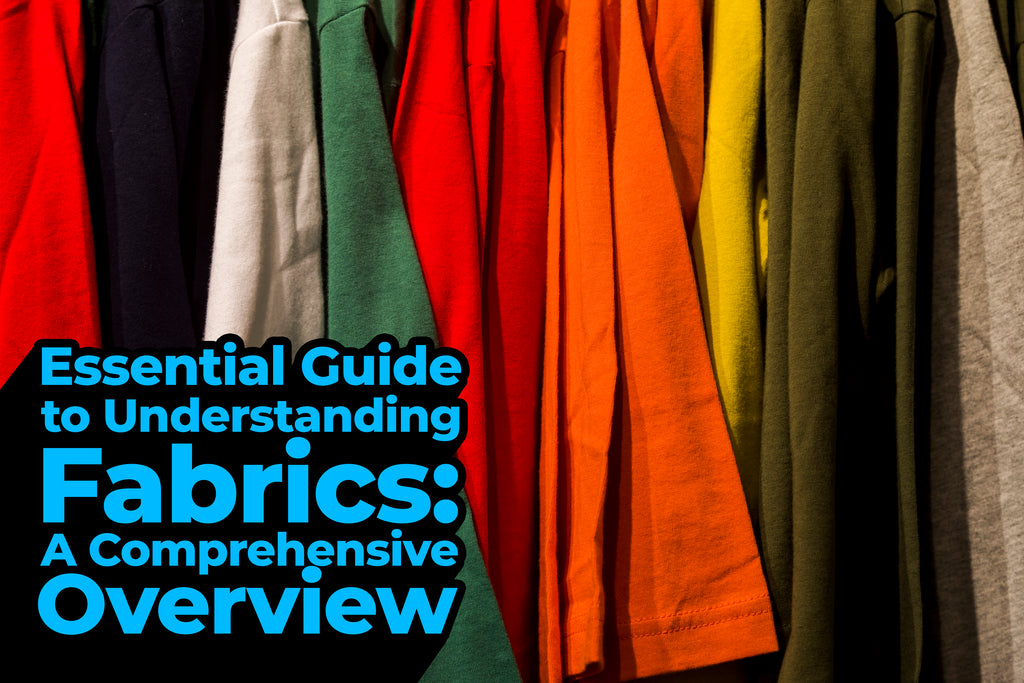Essential Guide to Understanding Fabrics A Comprehensive Overview
Posted by ARTEMIO NERVEZ JR

Fabric is an integral part of our daily lives, from the clothes we wear to the furnishings in our homes. Understanding the different types of fabrics can help you make informed decisions about what to buy, how to care for your textiles, and how to use them effectively. This guide will take you through the essentials of fabric types, their properties, and their best uses.
Natural Fabrics

- Cotton: Known for its softness, breathability, and durability, cotton is a versatile fabric used in everything from t-shirts to bed linens. It’s easy to care for and comfortable to wear, making it a popular choice for everyday use.
- Linen: Made from flax fibers, linen is highly absorbent and breathable, perfect for warm climates. It’s stronger than cotton but wrinkles easily, adding to its natural charm.
- Wool: This natural fiber is known for its warmth and elasticity. Wool is used in sweaters, coats, and suits, offering excellent insulation and a cozy feel. It requires special care to avoid shrinking and felting.
- Silk: A luxurious fabric made from the cocoons of silkworms, silk is smooth, strong, and has a natural sheen. It’s often used in formal wear, ties, and scarves. Silk requires gentle handling and dry cleaning to maintain its beauty.
Synthetic Fabrics

- Polyester: This synthetic fiber is durable, resistant to shrinking and stretching, and quick-drying. It’s commonly used in activewear, outerwear, and home furnishings. Polyester is easy to care for and often blended with natural fibers for added strength.
- Nylon: Known for its strength and elasticity, nylon is often used in hosiery, swimwear, and outdoor gear. It’s lightweight, resistant to mildew, and dries quickly, making it ideal for activewear.
- Acrylic: This fiber mimics the properties of wool but is lighter and less expensive. Acrylic is often used in sweaters, blankets, and upholstery. It’s easy to care for but can pill over time.
- Rayon: Made from cellulose, rayon is a semi-synthetic fiber that’s soft, breathable, and drapes well. It’s often used in dresses, blouses, and home textiles. Rayon requires gentle washing and may shrink if not handled properly.
Blended Fabrics
Blended fabrics combine the properties of different fibers to create textiles with specific qualities. Common blends include:
- Poly-cotton: A blend of polyester and cotton, this fabric combines cotton's breathability with polyester's durability. It’s commonly used in t-shirts, bed linens, and casual wear.
- Wool-silk: This luxurious blend combines the warmth of wool with the smoothness of silk, ideal for high-end garments and accessories.
- Linen-cotton: This blend offers the breathability of linen with the softness of cotton, perfect for summer clothing and home textiles.
Fabric Care Tips
- Read Labels: Always check the care labels on your garments to ensure proper washing and maintenance.
- Separate Colors: Wash light and dark fabrics separately to prevent color bleeding.
- Use Gentle Detergents: Harsh detergents can damage delicate fibers, so opt for mild, fabric-specific detergents.
- Avoid Overloading: Don’t overload your washing machine to allow fabrics to move freely and avoid excessive wear.
- Air Dry: Dry your fabrics to prevent shrinkage and maintain their shape.
Conclusion
At VS Tees, understanding the different types of fabrics and their properties is crucial in helping you choose the right materials for your needs, whether for clothing, home decor, or other uses. By knowing how to care for each type of fabric, you can extend the life of your textiles and keep them looking their best. This comprehensive overview is a valuable resource for making informed decisions about your fabric choices.





